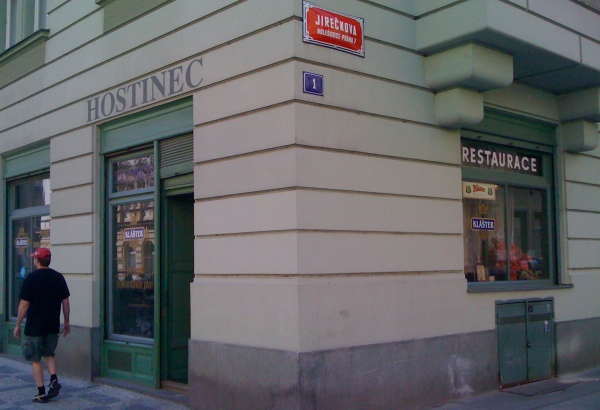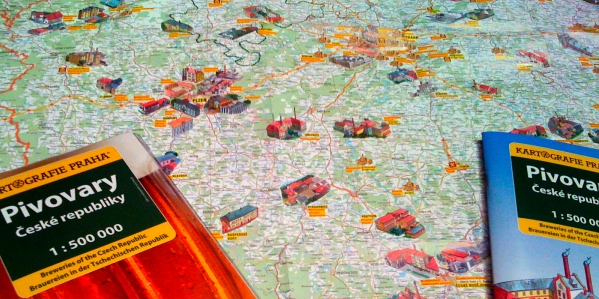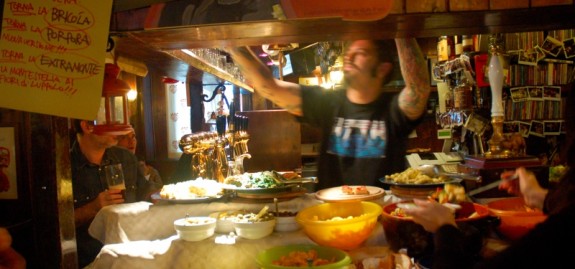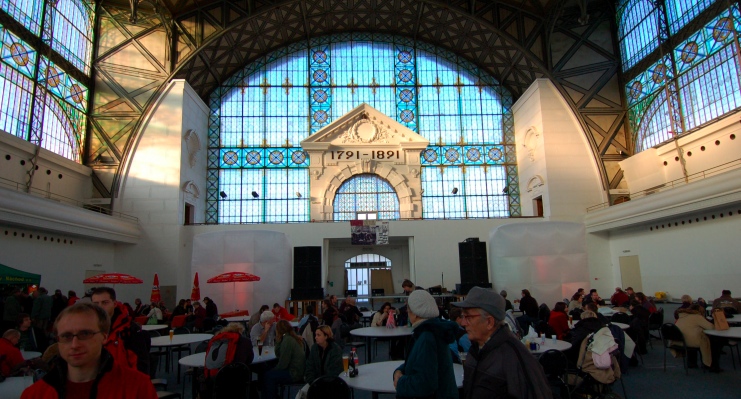Just over a week ago I went to Plzeň to join a group of British beer writers — Adrian Tierney-Jones, Mark Dredge, Pete Brown and Tim Hampson — at Pilsner Fest 2010. In addition to the festive, carnival-like atmosphere at giants Pilsner Urquell and Gambrinus, we also visited craft brewers and new brewpubs, as well as historic dives and dingy bars, to make a short film about beer culture in one of Europe’s greatest brewing cities.
Category: Beer Travel (Page 1 of 4)
If you couldn’t make it to the Slunce ve skle beer festival last Saturday in Plzeň, here’s a YouTube video from the day. In a word: Awesome.

The phenomenon of the čtvrtá pípa — or fourth pipe — just keeps on growing: slowly but steadily, more and more pub owners in Prague are switching over from monopolistic suds to beers from independent brewers, often on a tap they own themselves, rather than the three taps installed and owned by a major brewing group. It’s an interesting concept: when I wrote about it earlier this year for Prague Monitor Magazine, the term earned a note at the Schott’s Vocab weblog (“a miscellany of modern words and phrases”) at the New York Times.
Max Bahnson just covered two new čtvrtá pípa pubs at his Pivní filosof weblog, with not such great results. But there’s another fourth pipe pub which is a total winner: the Klášterní pivnice near Letná in Prague 7.

When my wife and I were preparing our research trips for Good Beer Guide Prague and the Czech Republic, we first had to make a map. We came up with a list of breweries based on information in the Pivovarský kalendář, a publication of the Czech Research Institute of Malting and Brewing, and cross-referenced it with the breweries’ own web sites. Once we had all the addresses, we bought a regular map of the Czech Republic and marked the breweries on it with little red dots. That homemade Czech beer map became an invaluable research tool, helping us to visit every brewpub in the Czech Republic at the time and most of the country’s industrial brewers.
Now a local publisher has put out a professional map of all the breweries in the Czech Republic.

Hungary is wine country, but it has a long tradition of brewing as well, with the legendary name of Dreher — as in Anton — the brand of one of the country’s best-known pale lagers. Unfortunately, finding good craft beer from the country’s small producers is tricky. Just about everywhere you go, you’ll come across Dreher (part of SABMiller) and Soproni (a Heineken brand). But great local beer? Microbrews? Not so easy to spot.
We spent most of the last two weeks in Hungary, first at Lake Balaton, then in Budapest, where we I finally found a couple of interesting beers. Or at least, what looked like interesting beers. My Hungarian is limited to the five words most commonly found on restaurant menus, but when I saw the sign above, I was pretty sure that “házi” might be something like “domácí” in Czech, the equivalent of “house-made,” and I knew that “sör” meant beer. So I picked up a bottle of each brew: a világos, or pale, called Gutberger, and a barna, or dark, called Braunger.

Despite Germany’s outstanding brewing traditions, the country’s capital is not widely thought of as a great place for beer. The city’s native beer style, the sour Berliner Weisse, is now almost extinct. And considering we’re talking about a city of 3.4 million people who seem to pride themselves on eating well, drinking well and going out a heck of a lot, finding good local beers can be surprisingly difficult.
That’s certainly the case for the Eschenbräu brewpub, which offers three regular beers with ten seasonal specials scheduled for 2009. It’s not impossible to reach, but it’s far enough off the tourist map that most casual visitors to Berlin aren’t going to bump into it.







